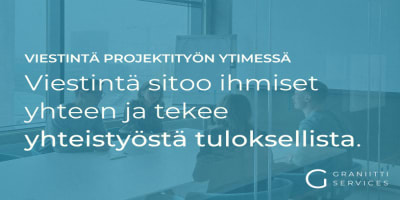Decision Quality in Project Portfolios
Lähde: Moonsoft Oy
Quinton van Eeden
In a previous blog[1] the lack of, and adherence to Decision Quality was posited as one of the core reasons why often the “survival of the unfittest” prevails when investment decisions are made in project portfolios.
One cannot judge the quality of a decision by its outcome – there are simply too many factors beyond the control of the decision maker which occur between the time of the decision and its eventual outcome[2] – especially in the case of capital projects which invariably takes years to complete. Quality decisions can result in poor outcomes and vice versa – Decision Quality is therefore a central premise for the optimization of value and risk in project portfolios.
The Decision Quality framework[3] provides the defining framework for a good decision. It is an extension of Decision Analysis (DA)—a set of concepts and tools that produce clarity about the best choice in an uncertain and dynamic environment such as project portfolios. DQ not only uses DA to get to the “right” answer but also engages the most important parties in the decision process to achieve alignment and commitment to action thus drastically increasing the likelihood that the project portfolio will achieve the anticipated strategic business objectives.
All high-quality decisions meet six requirements:
- Setting the right frame – An appropriate frame answers the question: “What problem or opportunity are we addressing?” Albert Einstein declared the importance of framing when he said, “If I had an hour to solve a problem I’d spend fifty-five minutes thinking about the problem and five minutes thinking about solutions.” Einstein’s statement should remind us that time spent in proper framing is time well spent; it’s our best assurance that we will solve the right problem and that decision-making efforts will be effective and efficient.
- Considering alternatives – We commonly approach problems by asking ourselves, “What should I do?” Asking “What COULD I do?” helps us recognize alternatives to the choice we are facing. An alternative is a possible course of action, defining what could be done in the context of the frame for a decision. Without alternatives, it’s hard to get what we want out of life. In fact, a decision without alternatives isn’t really a choice. In our decisions, we select the alternative with the greatest value as we see it. Thus, to reach Decision Quality, the list of alternatives should be large and varied enough to include a full range of possibilities. The Palisade DecisionTools suite supports not only the modelling of alternatives but also the range of uncertainties which are inherent in the identified alternatives.
- Gathering meaningful data – Information is a source of learning. But unless it is organized, processed, and available to the right people in a format for decision making, it is a burden, not a benefit. The DecisionTools suite supports the DIKW cycle[4, 5] whereby data is converted to information by adding context to the data in the form of a stochastic model, the results of which in turn are used as inputs into the decision-making process leading to knowledge – a decision on a course of action and the commitment of resources to execute the decision.
- Clarifying values and trade-offs – “The first step to getting the things you want out of life is this: decide what you want”. While a good set of alternatives is essential for any choice, we cannot effectively compare alternatives until we’ve articulated what we want. “What makes this alternative more attractive than another?” The expected value and sensitivity analysis results produced by the DecisionTools suite assist the decision-maker to clarify the respective values of each alternative and the trade-offs required for a chosen course of action.
- Using logical reasoning – In decisions that are simple, quick, or repeated frequently, the best alternative can usually be spotted based on experience and intuition. In slightly more complicated cases, basic calculations will reveal the best choice. Truly complex decisions, such as those in project portfolio management, require much more rigorous analysis – the type of analysis that is at the core of the Palisade DecisionTools suite.
- And finally – Committing to action – “What one does is what counts and not what one had the intention of doing” – Pablo Picasso
Focusing on each element of this rational decision-making model and involving the right people at the right time in the right way make it possible to create significant value and avoid mistakes that erode value. On the other hand, a lack of DQ leads to decision failures: failed strategies, wasted capital in investment decisions, recycling of decisions, blaming, and witch hunts.
“No sensible decision can be made any longer without taking into account not only the world as it is, but the world as it will be….” – Isaac Asimov.
The Decision Quality framework will be discussed during a forthcoming presentation by Palisade Corporation at Project Management Days 2018 in Helsinki. The use of the DecisionTools suite of risk and decision analysis software to facilitate the achievement of Decision Quality will be demonstrated during a presentation titled Optimising the Cost and Value of Project Portfolios.
References:
- Moonsoft Oy. (2018) Power and Politics in Project Portfolios. Projektipäivät 2018; Available from: https://projektipaivat.fi/blogi/power-and-politics-in-project-portfolios/.
- Spetzler, C., H. Winter, and J. Meyer, (2016) Decision Quality: Value Creation from Better Business Decisions John Wiley & Sons: Hoboken, NJ.
- SDG Group. (2016) Decision Quality Defined. Available from: https://www.sdg.com/thought-leadership/decision-quality-defined/.
- Axelos Ltd, (2013) Best Management Practice Portfolio: Common Glossary of Terms and Definitions.
- Piney, C., (2017) Earned Benefit Program Management – Aligning, Realizing, and Sustaining Strategy. CRC Press: Boca Raton, FL.


